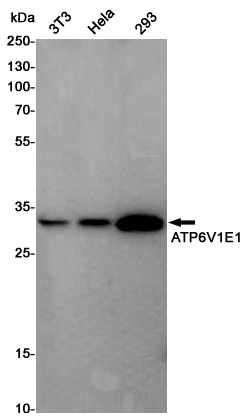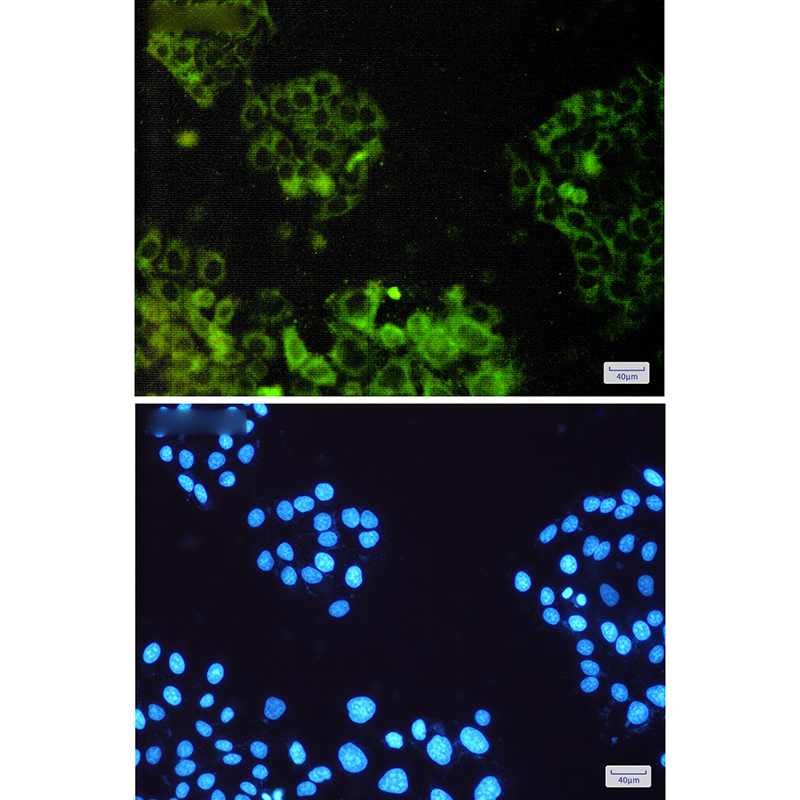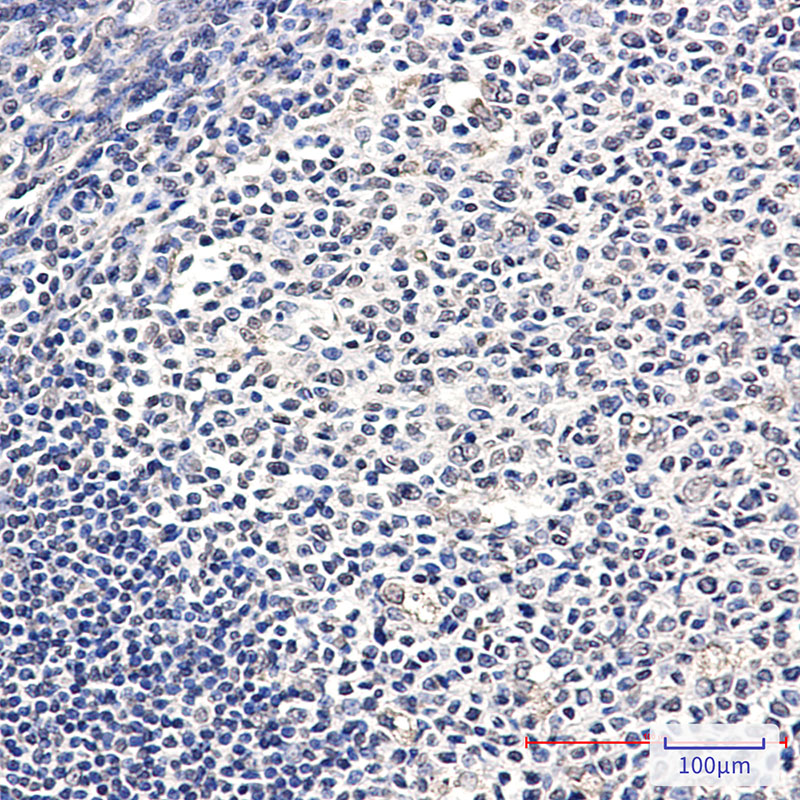


| WB | 咨询技术 | Human,Mouse,Rat |
| IF | 1/20 | Human,Mouse,Rat |
| IHC | 1/50-1/100 | Human,Mouse,Rat |
| ICC | 1/50-1/200 | Human,Mouse,Rat |
| FCM | 1/50-1/100 | Human,Mouse,Rat |
| Elisa | 咨询技术 | Human,Mouse,Rat |
| Aliases | V-ATPase subunit E 1; p31 |
| Entrez GeneID | 529 |
| WB Predicted band size | Calculated MW: 26 kDa; Observed MW: 26 kDa |
| Host/Isotype | Rabbit IgG |
| Antibody Type | Primary antibody |
| Storage | Store at 4°C short term. Aliquot and store at -20°C long term. Avoid freeze/thaw cycles. |
| Species Reactivity | Human,Mouse |
| Immunogen | Recombinant protein of human ATP6V1E1 |
| Formulation | Purified antibody in TBS with 0.05% sodium azide,0.05%BSA and 50% glycerol. |
+ +
以下是关于ATP6V1E1抗体的3篇示例文献摘要(注:以下内容为示例性质,实际文献需通过学术数据库检索确认):
---
1. **文献名称**:*ATP6V1E1 Expression Correlates with Lysosomal Dysfunction in Neurodegenerative Models*
**作者**:Chen L, et al.
**摘要**:本研究利用ATP6V1E1抗体进行免疫印迹和免疫荧光实验,发现帕金森病模型中该蛋白表达下调,导致溶酶体酸化缺陷,进而引发α-突触核蛋白异常聚集。
2. **文献名称**:*Prognostic Significance of ATP6V1E1 in Renal Cell Carcinoma*
**作者**:Miyazaki T, et al.
**摘要**:通过ATP6V1E1抗体对肾癌组织进行免疫组化分析,发现其高表达与肿瘤侵袭性及患者生存率降低相关,提示其作为潜在生物标志物的价值。
3. **文献名称**:*ATP6V1E1 Antibody Validation for Functional Studies of V-ATPase Assembly*
**作者**:Gupta R, et al.
**摘要**:本文系统验证了ATP6V1E1抗体的特异性,并利用CRISPR敲除细胞系证明其在研究V-ATP酶复合体组装及细胞内pH调控中的关键作用。
---
如需具体文献,建议通过PubMed或Google Scholar以关键词“ATP6V1E1 antibody”或“V-ATPase E1 subunit”检索,并筛选涉及抗体应用(如Western blot、IHC等)的研究。
The ATP6V1E1 antibody targets a subunit of the vacuolar-type H+-translocating ATPase (V-ATPase), a multisubunit enzyme critical for acidifying intracellular organelles such as lysosomes, endosomes, and secretory vesicles. V-ATPase consists of two domains: the cytosolic V1 complex (ATP hydrolysis) and the membrane-embedded V0 complex (proton translocation). ATP6V1E1 (V1 subunit E1) is a component of the V1 domain, playing a regulatory role in enzyme assembly, activity, and organelle-specific targeting. This subunit is ubiquitously expressed but shows tissue-specific isoforms, reflecting its diverse roles in cellular homeostasis, including protein degradation, ion transport, and synaptic signaling.
Antibodies against ATP6V1E1 are essential tools for studying V-ATPase function in diseases linked to lysosomal dysfunction, such as neurodegenerative disorders (e.g., Alzheimer’s, Parkinson’s), renal tubular acidosis, and cancer. In cancer, V-ATPase overexpression is associated with tumor metastasis and drug resistance, partly due to its role in modulating the tumor microenvironment. Researchers use ATP6V1E1 antibodies in techniques like Western blotting, immunohistochemistry, and immunofluorescence to assess protein expression, localization, and interactions. Recent studies also explore ATP6V1E1’s potential as a therapeutic target, driving interest in developing inhibitors. Validating antibody specificity is crucial, as cross-reactivity with homologous subunits (e.g., ATP6V1E2) may confound results.
×